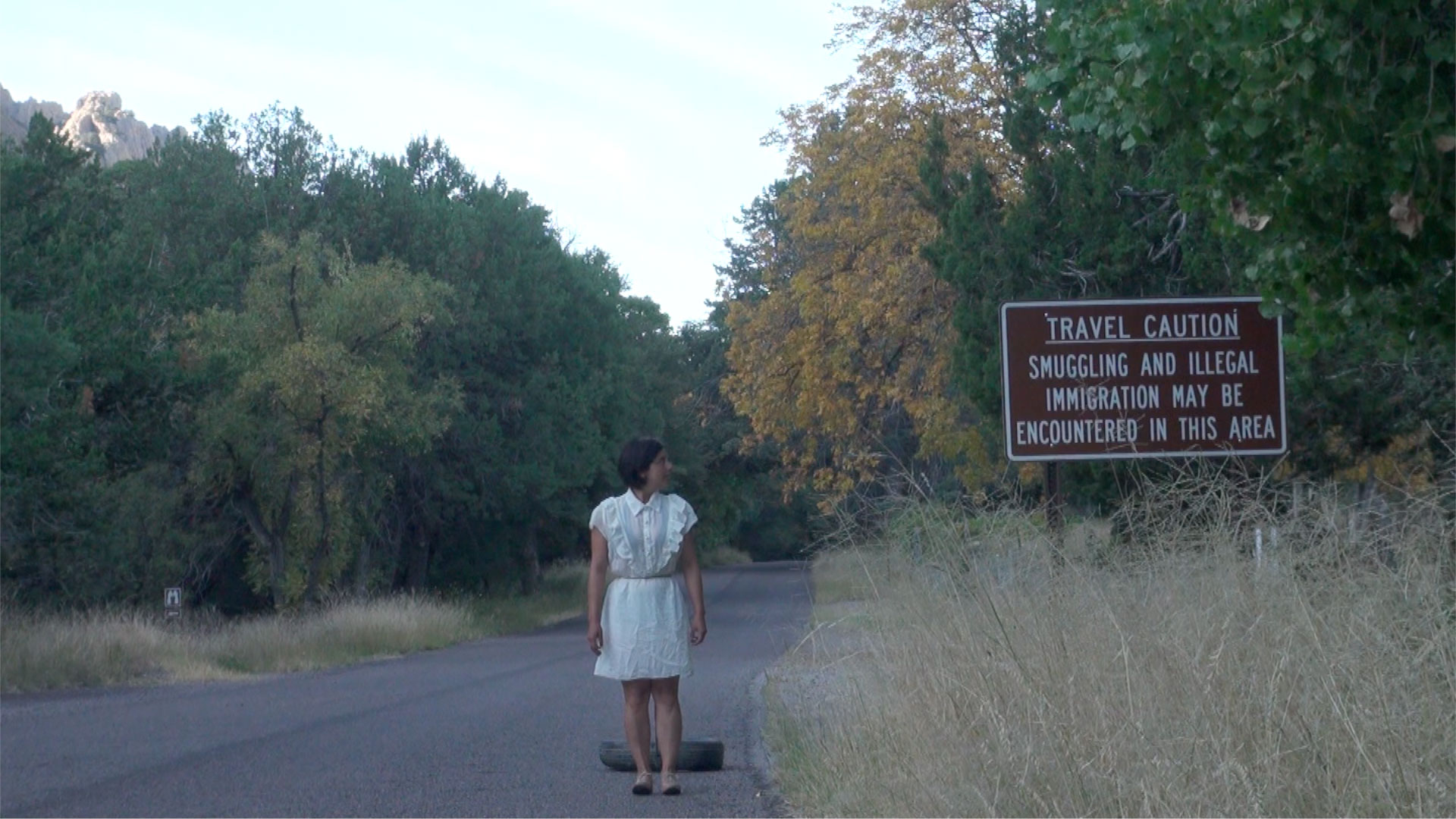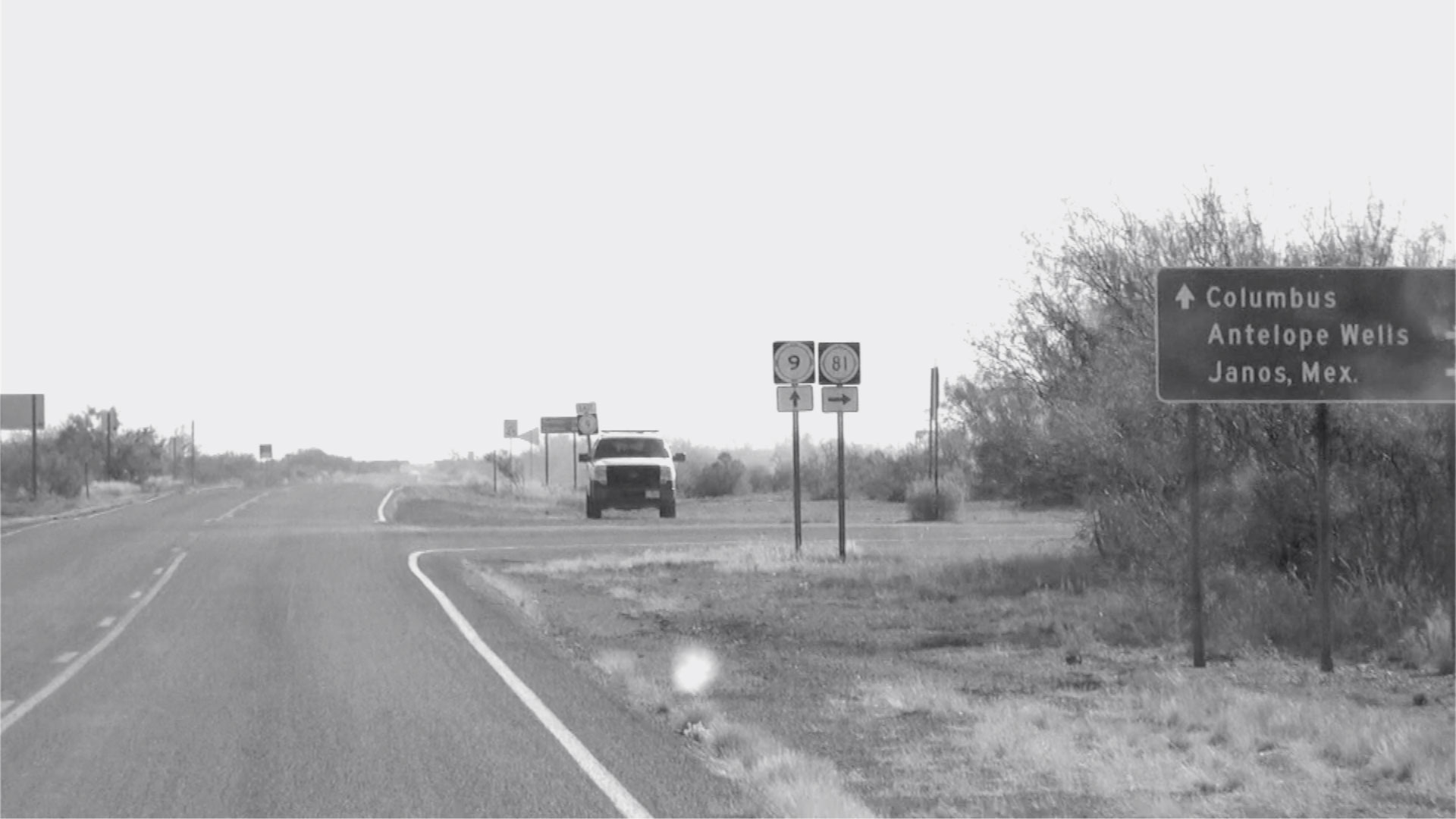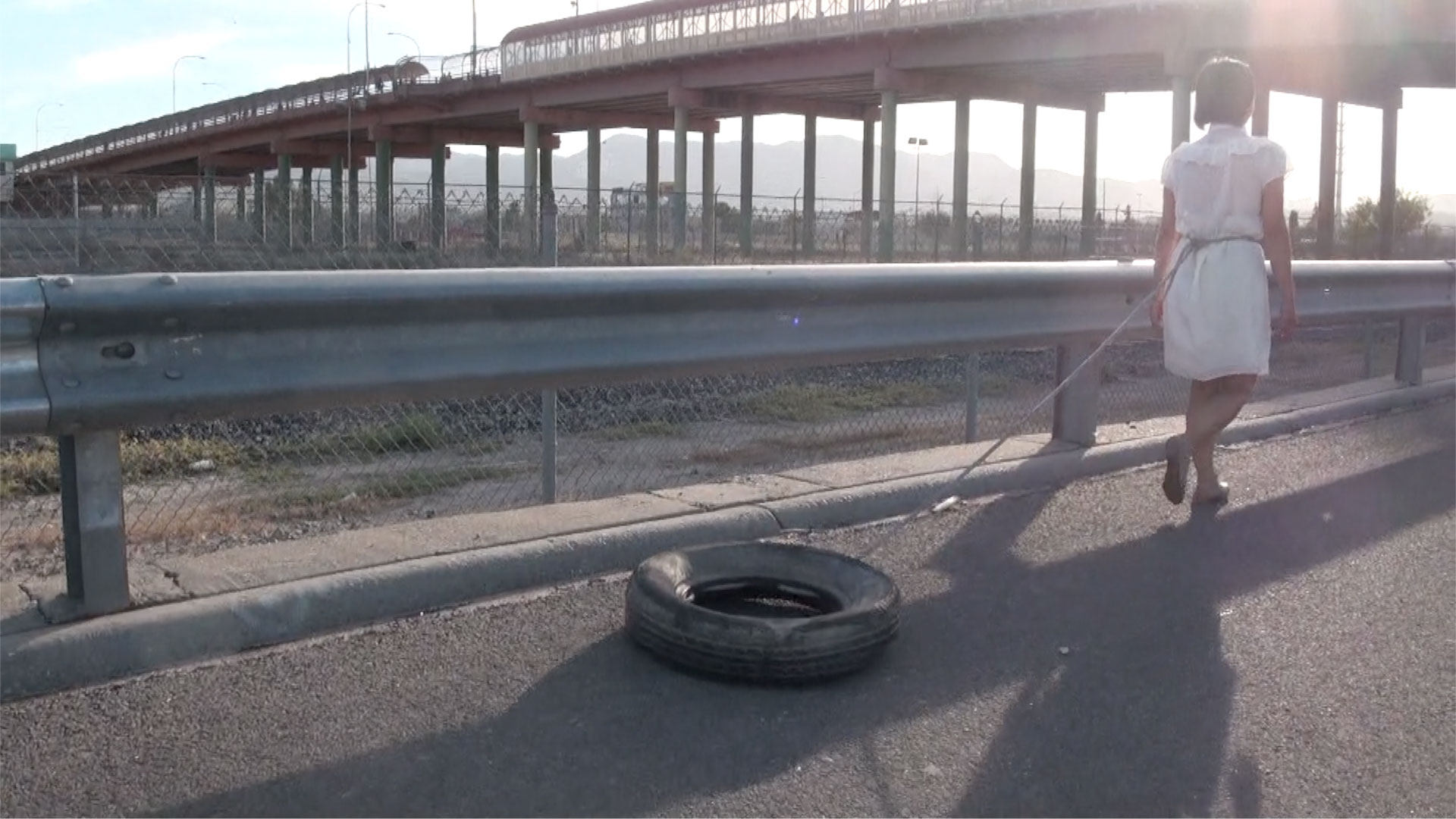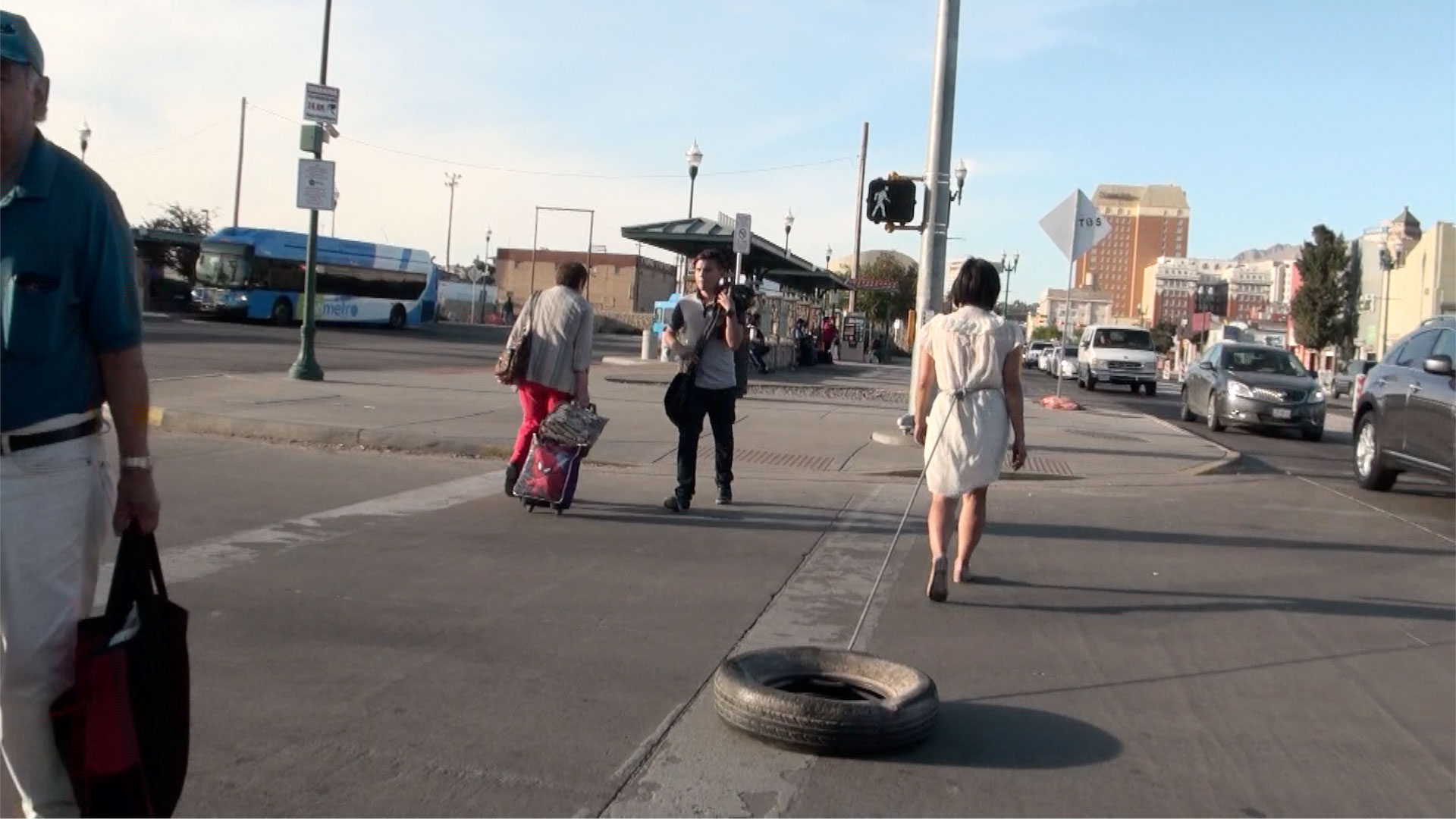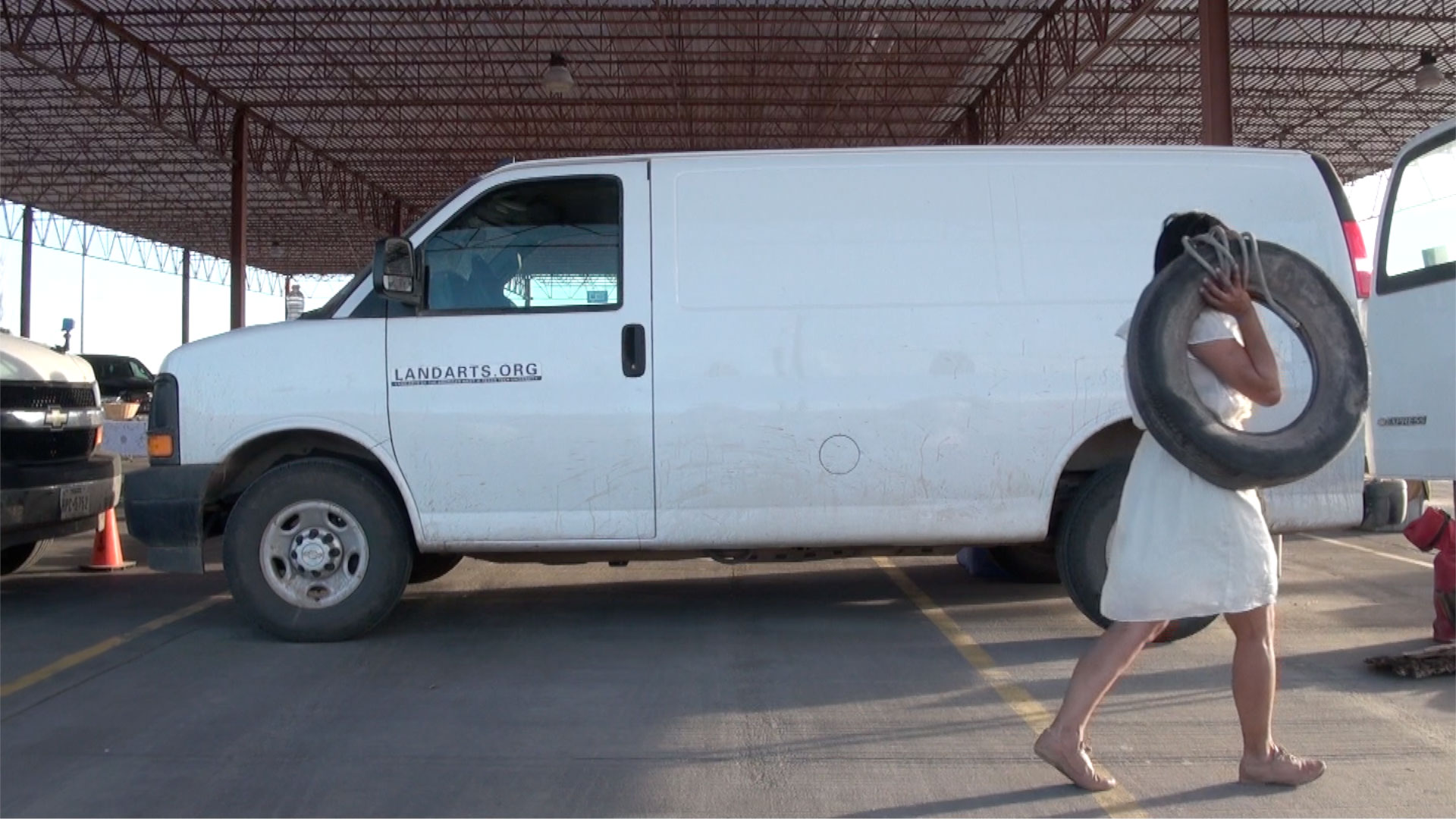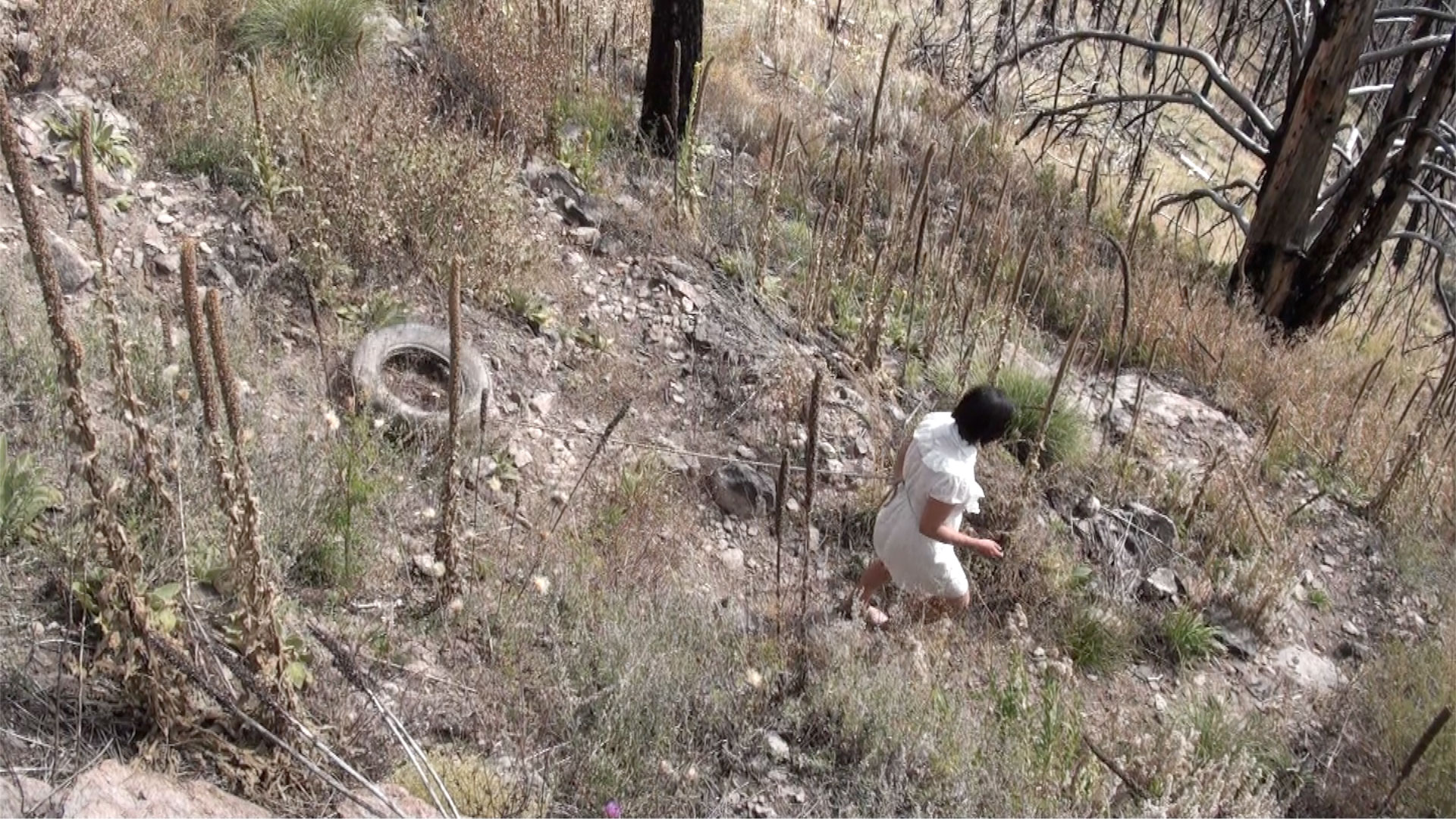The action was carried out in the context of the Land Arts of the American West Program, Texas Tech University, United States of America, wich is directed by Chris Taylor since 2008.
«The program, is a field experience in the southwestern USA, understood as a pedagogical agent that seeks to open horizons (…) regarding the understanding of human actions that shape the territory (…), which is developed in the context of a 10,000 kilometers overland journey, camping for two months in sites near the: Double Negative, Spiral Jetty, Sun Tunnels, The Lightning Field, (…) military-industrial infrastructure, nature and waste sites».
EL PASO, arises from the observation of the protocol applied by the USA. Border Police in the territory. This consists of tying truck wheels to the back of their vehicles and dragging them over dirt roads to keep them flat, in order to easily detect the marks left by the irregular transit of people.
La acción fue realizada en el contexto del Programa “Land Arts of the American West” de la Universidad de Texas Tech, Estados Unidos de América, el cual es dirigido por Chris Taylor desde el año 2008.
“El programa, es una experiencia de campo en el suroeste de EEUU, entendido como un agente pedagógico que busca abrir horizontes (…) respecto a la comprensión de las acciones humanas que dan forma al territorio (…), el cual se desarrolla en el contexto de un viaje por tierra de 10.000 kilómetros, acampando durante dos meses en sitios cercanos al: Double Negative, Spiral Jetty, Sun Tunnels, The Lightning Field, (…) infraestructura militar-industrial, sitios de naturaleza y de desechos”.
El PASO, surge a partir de la observación del protocolo que aplica la Policía Fronteriza de EEUU en el territorio. Este consiste, en atar en la parte posterior de sus vehículos ruedas de camión las cuales, arrastra sobre caminos de tierra con el fin de mantenerlos llanos, para así detectar fácilmente las marcas dejadas por el tránsito irregular de personas.
